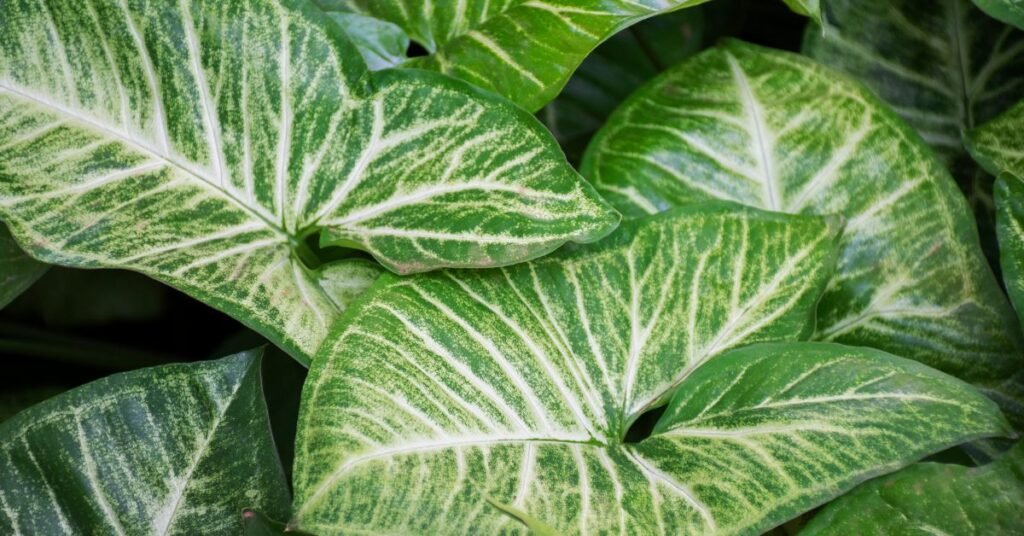The Nerve Plant, scientifically known as Fittonia albivenis, is a small yet captivating tropical houseplant admired for its striking network of colorful veins. Native to the rainforests of South America, particularly Peru, this plant thrives in high humidity and low to medium light conditions.
It’s often called the “mosaic plant” because of its beautifully patterned leaves that look like delicate nerve lines spread across lush green, pink, or white foliage. Perfect for terrariums and tabletops, the nerve plant adds an instant touch of tropical charm to any indoor space.
Understanding the Nerve Plant
Nerve plants are part of the Acanthaceae family and are popular for their ornamental foliage rather than flowers. They stay compact, usually growing up to 6 inches tall, making them an ideal choice for small pots, terrariums, or desk displays.
Appearance and Growth Habit
The plant features soft, oval-shaped leaves with contrasting vein colors — white, pink, or red depending on the variety. Fittonia spreads horizontally and can create a lush mat of foliage when grown in ideal conditions.
Popular Types of Nerve Plants
There are several varieties of Fittonia, each offering unique vein patterns and colors.
1. Fittonia albivenis ‘Argyroneura’ (White Nerve Plant)
Features dark green leaves with crisp white veins — one of the most classic and elegant varieties.
2. Fittonia verschaffeltii (Red Nerve Plant)
Has deep green leaves with vivid red or pinkish veins — a true showstopper.
3. Fittonia ‘Frankie’
Displays light pink veins on pale green leaves, offering a soft and delicate appearance.
4. Fittonia ‘Pink Angel’
Known for its bright pink veins, ideal for terrariums or decorative planters.

Ideal Growing Conditions for Nerve Plant
To keep your Nerve Plant healthy and vibrant, replicate its natural tropical environment — warm, humid, and shaded.
Light Requirements
Nerve plants prefer bright, indirect light. Direct sunlight can scorch their delicate leaves, while too little light can fade their color.
- Indoors: Keep near east- or north-facing windows.
- Avoid harsh afternoon sunlight.
Temperature and Humidity
Fittonia thrives in warm, humid conditions.
- Temperature: 65–80°F (18–26°C)
- Humidity: Above 50%
If your home is dry, use a humidifier, pebble tray, or place it in a terrarium.
Soil Requirements
Use a light, well-draining mix. A perfect blend is:
- 2 parts peat moss or coco coir
- 1 part perlite
- 1 part potting soil
This mimics rainforest soil — rich in moisture but airy enough to prevent root rot.
Watering and Feeding
Watering the Nerve Plant can be tricky because it’s sensitive to both dryness and overwatering.
Watering Tips
- Keep the soil consistently moist but never soggy.
- Let the top inch of soil dry before watering again.
- Always use room-temperature water.
If your plant starts to wilt, don’t panic — it often recovers quickly after watering.
Fertilizer Needs
Feed monthly during spring and summer with a diluted liquid houseplant fertilizer (half strength). Avoid feeding in winter when growth slows.
Potting and Repotting Nerve Plants
Fittonia plants like slightly snug pots but may need repotting every 1–2 years.

How to Repot
- Gently remove the plant from its old pot.
- Loosen the roots lightly.
- Place in fresh, moist soil mix.
- Water thoroughly after repotting.
Use pots with good drainage holes to prevent root rot.
Propagation Methods
Nerve plants are easy to propagate and share!
1. Stem Cuttings
- Cut a healthy stem below a leaf node.
- Place it in water or directly into moist soil.
- Keep warm and humid — roots form within 2–3 weeks.
2. Division
During repotting, divide the plant into smaller clumps and replant each in its own pot.
Propagation not only gives you new plants but also keeps the main plant compact and bushy.
Common Problems and Solutions
Even though Fittonia is low-maintenance, it can show signs of stress if neglected.
| Problem | Cause | Solution |
|---|---|---|
| Wilting leaves | Dry soil or low humidity | Increase watering and humidity. |
| Brown leaf edges | Dry air or low moisture | Mist regularly or use a humidifier. |
| Yellow leaves | Overwatering | Allow soil to dry slightly before watering. |
| Faded color | Low light | Move to a brighter spot with indirect light. |
| Droopy leaves | Shock from cold air or dryness | Keep away from drafts and maintain steady moisture. |
Benefits of Keeping a Nerve Plant
The Nerve Plant isn’t just pretty — it’s also beneficial for your indoor environment.
1. Air Purification
Like many houseplants, Fittonia helps clean indoor air by absorbing toxins and releasing oxygen.
2. Boosts Humidity
Fittonia naturally increases moisture levels, making it a great companion for other tropical plants.
H3: 3. Mood-Boosting Decor
Its lively colors and soft texture add freshness and calmness to indoor spaces, promoting relaxation and focus.
4. Perfect for Small Spaces
Because of its compact size, it’s ideal for desks, bookshelves, or small apartments.
Seasonal Care Tips
- Spring & Summer: Growth period — regular watering, monthly feeding, and bright light.
- Autumn & Winter: Reduce watering slightly, no fertilizing, and keep away from cold drafts.
Keep an eye out for pests like aphids or spider mites. Wipe leaves occasionally with a damp cloth to keep them clean and healthy.
Fittonia in Terrariums
The Nerve Plant is one of the most popular choices for terrariums due to its love for humidity and shade.
- Pair it with mosses, ferns, and other tropical plants.
- Use a closed terrarium to maintain humidity.
- Avoid overcrowding — Fittonia likes space to spread.
Its colorful leaves create a beautiful contrast in miniature garden designs.
FAQs About Nerve Plant (Fittonia)
Q1: Why is my Nerve Plant drooping?
It’s likely thirsty or exposed to dry air. Water it and mist frequently — it usually perks up within hours.
Q2: Can Fittonia grow in low light?
Yes, but it will grow slower. Bright, indirect light gives the best color and fullness.
Q3: How often should I water a Nerve Plant?
Water when the top 1 inch of soil feels slightly dry — usually every 4–5 days in summer and less in winter.
Q4: Can I grow Fittonia in water?
Yes, short-term water propagation works well, but it’s best to transfer it to soil for long-term growth.
Q5: Are Nerve Plants pet-friendly?
Yes! Fittonia is non-toxic to cats and dogs.
Final Thoughts
The Nerve Plant (Fittonia) is a delightful and rewarding choice for indoor gardeners. With its eye-catching veins, compact size, and humidity-loving nature, it brings both color and calmness to your space.
Whether grown in a terrarium or a decorative pot, Fittonia thrives with a little care — consistent moisture, humidity, and love. It’s the perfect plant to brighten your home, desk, or windowsill all year long.

